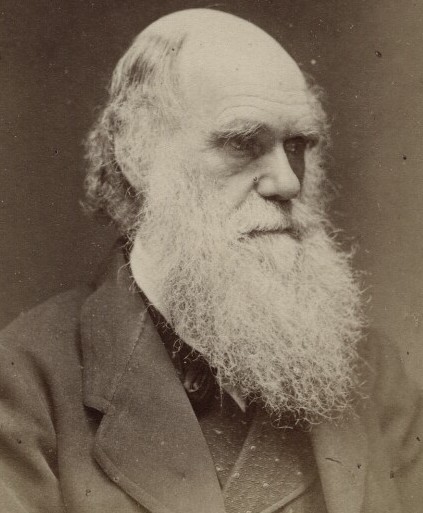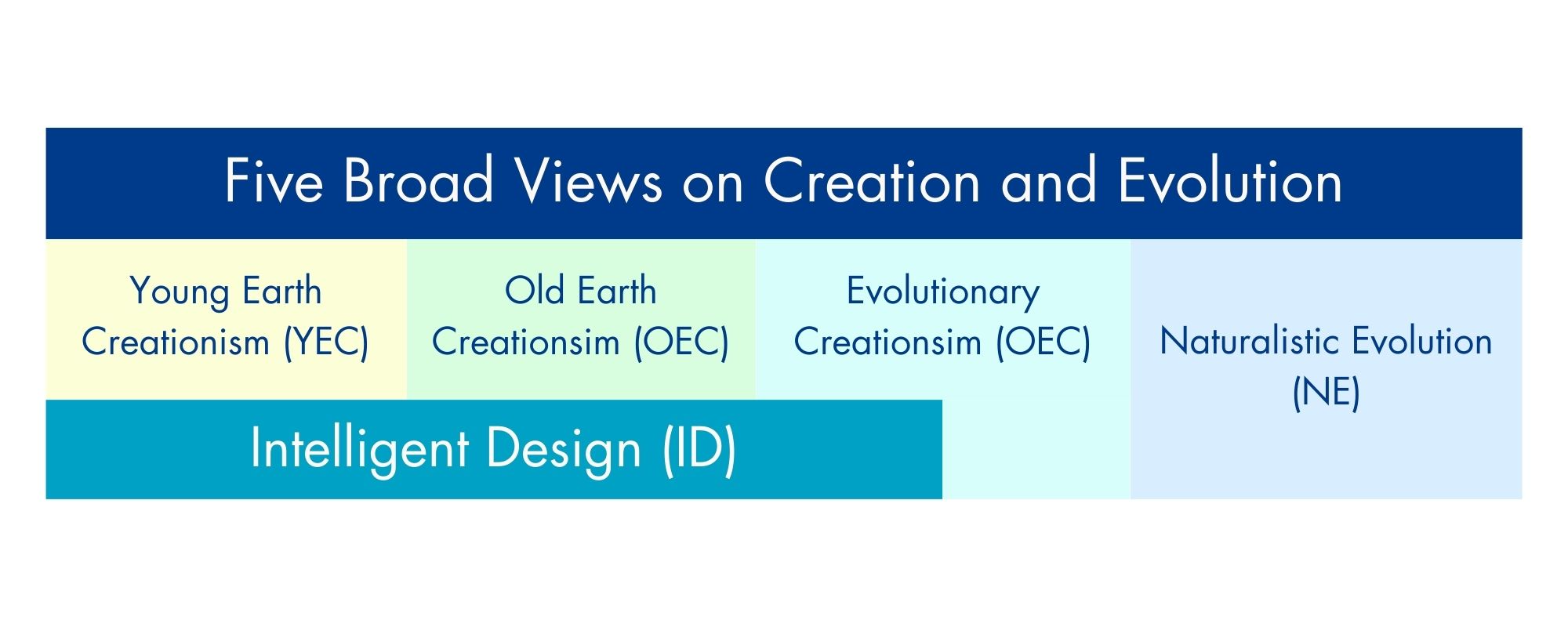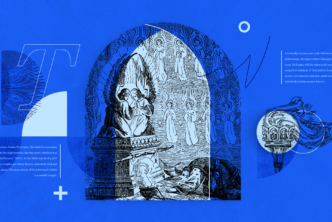Christians debate creation and evolution as sharply as any other issue. All Christians believe that in or at “the beginning,” God “created the heavens and the earth” (Gen 1:1). Nicene Christians confess the Father as “Maker of heaven and earth, and of all things visible and invisible,” the Son as the One “by whom all things were made,” and the Spirit as “the Lord and Giver of Life.”
But what precisely that means as to the timing and nature of creation, and the relationship of creation to evolution—this is hotly disputed. This piece will survey five broad views on creation and evolution:
- Naturalistic Evolution (NE)
- Young Earth Creationism (YEC)
- Old Earth Creationism (OEC)
- Evolutionary Creationism (EC)
- Intelligent Design (ID)

On the origins of evolution
Charles Darwin’s On the Origin of Species sparked an intellectual revolution. But even before him, geological studies like those of Charle Lyell argued that the earth was actually millions of years old. Population studies by Thomas Malthus argued that while earth’s resources increase arithmetically, unchecked populations increase exponentially, begetting a struggle for existence. Paleontological studies unearthed a growing number of extinct species (dinosaurs most famously), vividly illustrating the struggle for existence.
William Paley argued that a watch’s purposefully ordered parts require a watchmaker. Likewise, nature’s complexity requires a designer. But as Darwin took his famous voyage upon the HMS Beagle, he wrestled with the traditional view of the fixity of species—and with Paley’s claims. Darwin’s research suggested a new mechanism for evolution which he termed “natural selection,” with three pillars:
- Some natural variety exists between organisms of a species.
- Some variations are heritable (can be passed down genetically).
- There exists a constant struggle between organisms.
Since some natural, heritable variations prove more profitable to survival, they are more likely to propagate in an isolated population. Over massive stretches of time the cumulative impact of these changes would result in speciation (the development of new species). Looking backwards along that trajectory far enough reveals the rise of existing and even extinct species.
While Darwin personally journeyed from Christianity to agnosticism and argued for a naturalistic form of evolution, one that involves no deity, Origin itself technically argued within a theistic framework. Natural selection accords better with “the laws impressed on matter by the Creator.”1
Biological evolution has moved beyond Darwin’s formulations. The contributions of radiometrics, molecular biology, and especially genetics (unknown to Darwin), all combined into what is commonly called the Neo-Darwinian Synthesis. This represents the mainstream Western view of biology and the origin of life outside the church.
How does Christianity relate to science?
What about inside the church? The creation–evolution debate is actually a subset (though probably the most important) of a much larger question: How does Christianity relate to the findings of modern science?
Ian Barbour famously proposed four approaches (or progressive steps) to describe the complex interactions between science and religion:
- Conflict: science and religion are fundamentally opposed
- Independence: science and religion are separate domains
- Dialogue: science and religion are in conversation
- Integration: science and religion are integrated
“Although it remains influential culturally,” Alister McGrath explains, the conflict thesis “is not seen by historians of science as being reliable or defensible, and it is no longer taken seriously by historical scholarship.”2
Despite the enduring popularity of the notion, science simply has not been at war with religion.
Neither, however, can it be said that science and the Christian religion are separate domains. Stephen Jay Gould’s concept of “Non-Overlapping Magisteria” does not work for a faith in which God becomes man in space-time history, in which all things will be put under Christ’s feet.
Most thinking Christians adopt some form of dialogue and integration—even though, in the debate over origins, there are times when the conflict thesis is appealing. Sadly, in popular usage, the origins debate perpetuates the myth that science and the Bible are at war, polarizing into a sharp dichotomy: “evolution” (i.e., atheistic, materialistic, naturalistic evolution) vs. “creationism” (particularly fundamentalistic forms of YEC). Public perceptions of the Scopes (1925) and Dover trials (2007) contributed to this notion. Everyone is pigeonholed. Moderate positions become casualties of war.
Gerald Rau helpfully warns that the conflict dynamic hardens debate. Extreme ends dominate public discussion: “Because if people feel those are the only options, they must gravitate toward one or the other.” Yet, Rau says,
In almost every matter of public opinion there are not only two extremes but a range, a gradient, a spectrum of views between those extremes. For most issues there is a relatively large group in the middle, but the ends dominate public awareness because of the easily recognizable rhetoric.3
Christians should see beyond the false dichotomy and recognize a spectrum of opinions.
What do Christians believe about creation?
As Christians have wrestled for 150 years with science’s evolving claims, a spectrum of views on creation and evolution has indeed emerged.

Naturalistic (or atheistic) evolution can be set aside as incompatible with orthodox Christianity. Other Christian views of the world’s origins, however, can be visualized in relation to the scientific consensus.
J. B. Stump notes that an almost universal consensus in the physical sciences (physics, chemistry, geology, and astronomy) concludes that the universe is 13.8 billion years old and the earth 4.5 billion years old. A similar consensus in the life sciences (biology and medicine) concludes that all human and animal life shares common ancestors. The “overwhelming majority of scientists” have concluded “that science has shown beyond a reasonable doubt that the earth is very old and that life (including humans) has evolved from common ancestors.” Stump helpfully charts different views by their reaction to these conclusions:4
- Evolutionary Creationists accept these conclusions from both physical and life sciences.
- Old-Earth Creationists accept the claims of the physical sciences on the age of the universe but not those of the life sciences about common ancestry.
- Young-Earth Creationists reject the central conclusions of both the physical and life sciences.
(Intelligent Design, as I explain below, doesn’t fit the chart so neatly, as its adherents can also hold one of the other views, or none of them.)
Debate among these positions has to take account of a complex web of related debates, including:
- The six “days” of creation (Gen 1:1–2:3)
- The identity of the “firmament” (Gen 1:6–8)
- Animal pain, death, and diet (Gen 1:29–30)
- Whether Adam and Eve were the first humans or only a representative couple (Gen 2)
- The extent of the fall (Gen 3)
- The genealogies in Genesis 5 and 10
- The extent of the flood narrated in Genesis 6–8
- How to read related New Testament texts (Mark 10:6; Rom 5:12–21; 1 Cor 15:21–22; 45–49; etc.)
Importantly, adherents holding each position affirm the inspiration, authority, and inerrancy of the Bible. Tremper Longman cautions:
There is room for discussion among believers, and discussion only happens when we refrain from demonization. … So we should enter the following discussion with the attitude that these are important issues but not issues that decide whether or not you are a Christian or whether or not you believe the Bible is God’s Word.5
What are the different views of the days of creation?
Let’s dig in to just one of the debates in the bullet list above: the nature of the six “days” of creation. Michael Strauss explains—in a resource I found to be particularly excellent, Dictionary of Christianity and Science: The Definitive Reference for the Intersection of Christian Faith and Contemporary Science—that “at no time in history has there been a consensus view held by all theologians” on the exact nature of the “days” of Genesis 1–2.6
Some major possibilities include:
- Each day was a 24-hour day: God created the earth in six consecutive 24-hour periods marked by “morning and evening.”
- The “Day-Age Theory,” in which the “days” represent a great length of time.
- The “Analogical Day” view, in which “days” merely set the pattern for our “work week” (cf. Exod 20:11).
- The “Unspecified Length Day.”
- The “Gap” theory, in which the “days” are 24-hour days but long gaps occurred between Genesis 1:1 and 1:2.
- “Intermittent Days,” in which the “days” were 24-hour days but were separated by long epochs.
- The view that the word “days” actually focused on Palestine: the “days” only describe God preparing Canaan.
- The “Framework Hypothesis,” in which the days are not chronological but instead form a literary structure: days 1–3 form and days 4–6 fill the formless and empty earth (see Gen 1:2).
Five major scholars present different views in the Logos Mobile Ed Course: “Perspectives on Creation.” There simply is not sufficient space in any article to enter the details for all of these theories.
What is Young Earth Creationism?
Let us turn, instead, to the major views on the origins of life and the universe, starting with Young-Earth Creationism (YEC). YEC is the view that divine creation was special and relatively recent. Most adherents hold that God created the entire universe in six twenty-four-hour days less than ten thousand years ago. All believe Adam and Eve were historical persons and that the fall was a historical event with theological implications. Effectively all believe the narrative of Noah’s ark (Gen 6:1–9:17) reflects a historical global flood.
What are some arguments for Young-Earth Creationism?
Most YEC proponents argue that theirs is the most straightforward reading of Genesis, especially creation and fall (Gen 1–3), genealogies (Gen 4–5), and the flood (Gen 6–9).
While skeptics explain that YEC is a recent phenomenon,7 YEC proponents respond that core ideas of YEC have patristic support.
With a number of notable exceptions, the early church “affirmed that God the Father created, out of nothing, the heavens and the earth and all that is visible and invisible, through God the Son, in six days, a few thousand years ago,”8 though notably it never creedalized the age of the earth.
While the position of biblical writers on “the age of the earth, creation, or the extent of the flood is contentious,” John Mark Reynolds concedes, the position of “the majority of the church fathers is not.” YEC should be seen not as a modern innovation but as “an attempt by scholars and scientists to argue for or sustain a long-held Christian position.” Most evangelical scholars “have found YEC scientifically unpersuasive and the theological case inconclusive,”9 but early Christian acceptance of a young earth should be given due weight.
Some notable YEC proponents include:
- Answers in Genesis (founder, Ken Ham)
- The Institute for Creation Research (founder, Henry Morris)
- Creation Ministries International (founder, Carl Wieland)
- Todd S. Beall
- Dustin Burlet
- Hans Madueme
- Terry Mortenson
- Paul Nelson
- Joseph A. Pipa Jr.
- Andrew Snelling
- John Mark Reynolds
- Todd Wood
What is Old-Earth Creationism?
Old-Earth Creationism (OEC; sometimes called Progressive Creationism) is the view that accepts the scientific consensus that the universe is 14.5 billion years old and the earth 4.5 billion years old, while holding to a special creation of the universe. Old-Earth Creationists might hold several different views on the “days” of creation. Leading Christian astronomer Hugh Ross has popularized the Day-Age view, in particular.
What are some arguments for Old-Earth Creationism?
Some of Ross’s arguments against viewing the days of Genesis 1–2 as twenty-four-hour days are:10
- The events narrated on the sixth day represent many weeks, months, or even years worth of activities. God planted a garden, making all kinds of trees grow (2:9) and placed man in the garden to tend it. Adam named all the animals (2:19), was put to sleep, and exclaimed “now at last” (2:23) when seeing Eve, suggesting a long wait.
- The seventh day in the Genesis account is not marked with an ending as the other six are. New Testament texts suggest this day’s rest continues (Heb 4:1–11, using Ps 95:11; cf. John 5:16–18).
- Biblical authors compare God’s eternality to the longevity of mountains or the founding of the earth (Ps 90:2; Prov 8:24–26; Eccl 1:4, 7, 10; Mic 6:2). The suitability of these metaphors suggest the planet is ancient. Habakkuk 3:6 and 2 Peter 3:5 directly declare that the mountains are “ancient,” the hills “age-old,” and the heavens existed “long ago.”
OEC is very common among evangelical theologians. Charles Spurgeon concluded:
We do not know how remote the period of the creation of this globe may be—certainly many millions of years before the time of Adam. Our planet has passed through various stages of existence, and different kinds of creatures have lived on its surface, all of which have been fashioned by God.11
Learn more with the Logos Reasons to Believe Collection.
Some notable OEC proponents include:
- Wayne Grudem (editor of Theistic Evolution: A Scientific, Philosophical, and Theological Critique)
- Kenneth Keathley
- C. S. Lewis
- J. I. Packer
- Hugh Ross (Reasons to Believe)
- Francis Schaeffer
- C. I. Scofield (Scofield Reference Bible)
- Davis A. Young
What is Evolutionary Creationism?
Evolutionary Creationism (EC) accepts the theory of evolution as the means by which God created the world. In some ways EC has its beginning with the botanist and contemporary of Darwin, Asa Grey, who argued that Darwin’s theory should be understood theistically. One proponent notes that EC includes two basic ideas: “First, that God created all things, including human beings in his own image. Second, that evolution is the best scientific explanation we currently have for the diversity and similarities of all life on Earth.”
Gerald Rau points out that some models of theistic evolution (a contested term) are effectively deistic and others more theistic. The latter also disagree about the degree of divine intervention. He thus sub-divides EC into three categories:
- Non-Teleological Evolution (NTE) posits that evolution occurs without any predetermined direction or goal. Notably, many who use the term “theistic evolution” refer narrowly to this more deistic model.
- Planned Evolution (PE) introduces intention or purpose behind evolutionary processes, especially at the beginning.
- Directed Evolution (DE) posits more divine intervention throughout the entire processes by which evolution operates. Some use the term “Evolutionary Creation” more specifically of these last two views, distinct from theistic evolution.12
What are some arguments for Evolutionary Creationism?
Francis Collins converted to Christianity as a medical student. One of the world’s top biologists, he headed the widely acclaimed Human Genome Project. Presidents George W. Bush and Barack Obama awarded him the National Medals of Freedom in 2007 and Science in 2009. The director of the NIH for over a decade, his New York Times bestseller, The Language of God, sparked a public conversation on evolution and Christian faith. He argued that God created all life through the evolutionary process.
Collins founded The Biologos Foundation, now headed by Deborah Haarsma, to continue conversation on the intersection of faith and science. The neuroscientist Denis Alexander summarizes evidence for evolution and answers objections in Creation or Evolution, while Collins and Karl Giberson advance evidence in The Language of Science and Faith.
EC proponents often employ the “two books” metaphor, perhaps dating back to Origen. Scripture proclaims that the natural world reveals God (Rom 1:17–32; Acts 17:26–29; Ps 19). The Bible is not a science textbook, but the same God speaks in both Scripture and creation. The Belgic Confession, article 2, captures both revelations, arguing that we “know Him by two means: First, by the creation, preservation, and government of the universe; which is before our eyes as a most elegant book,” and second, “by His holy and divine Word.”13
EC adherents often refer to the work of the Hebrew scholar John Walton, whose Lost World Series has elucidated at the popular level material from his larger monographs on the ways that the early chapters of Genesis compare to cosmological texts from the ancient Near East. He argues that Genesis 1 “does not offer a descriptive model for material origins,” as its focus is on functional origins in relation to the people in the image of God, viewing the cosmos as a temple, rather than material origins.
In the absence of such a model, Christians would be free to believe whatever descriptive model for origins makes the most sense. The major limitation is that any view eventually has to give God full control of the mechanisms if it claims to be biblical.14
Learn more with the BioLogos Books on Science and Christianity collection.
Some notable EC proponents are:
- Francis Collins
- Deborah Haarsma
- Tim Keller
- Dennis Lamoureux
- Tremper Longman III
- Scott McKnight
- Dennis R. Venema
- John Walton
- N. T. Wright
What is Intelligent Design?
Intelligent Design (ID) is a broader category than the above views. Its adherents argue simply that design is empirically detectable in nature, regardless of the identity of the designer. ID has some defenders who hold to YEC and many more who hold to OEC, while others are non-committal on the age of the earth. Some adherents of Directed Evolution (DE) support ID, maintaining that there is visible evidence of design in evolution. Indeed, one need not have distinctly religious commitments to fit under the ID umbrella. Most EC proponents, however, reject ID as unscientific, and most YEC proponents see its arguments as compromising with the spirit of the age.
Some of ID’s early formulations were:
- Biochemist Michael Denton’s Evolution: A Theory in Crisis
- Law professor Phillip Johnson’s influential Darwin on Trail
- Biochemist Michael Behe’s bestseller, Darwin’s Black Box
- Mathematician William Dembski’s The Design Inference
What are some arguments for Intelligent Design?
Michael Behe improved elements of William Paley’s argument for design with the notion of irreducible complexity, “a property of a system of separate parts that interact with each other to accomplish a specific function, in which the removal of one or more of the parts eliminates the function of the system.”15
Behe famously illustrates the idea by pointing to a mousetrap, which is usually composed of multiple parts (e.g., a wood platform, a spring, staples, a hammer, and a holding bar), each of which serves an essential function. Removing any part renders the object incapable of catching mice. The trap is irreducibly complex. Likewise, gradual and piecemeal evolution cannot explain the rise of complex molecular biological machines (like his primary example, the bacterial flagellum) which require each part to fulfill their function.
Learn more with the Discovery Institute Science Collection.
Some notable ID proponents are:
- The Discovery Institute
- Michael J. Behe
- David Berlinski
- William A. Dembski
- Michael Denton
- Phillip Johnson
- Stephen C. Meyer
- Charles Thaxton
- Thomas Woodward
Conclusion: disagreeing agreeably
Christians disagree sharply about creation and evolution. We must disagree charitably. The Creation Project promotes gracious discussion. Watch a helpful panel discussion on the genre of Genesis 1–3.
“Let no man…think or maintain,” Francis Bacon urged, “that a man can search too far or be too well studied in the book of God’s word, or in the book of God’s works.” Rather than choose between them, he advised that men “endeavour an endless progress or proficience in both.” Bacon’s statement appeared as an epigraph in the front of every edition of Darwin’s Origin.
Read your Bible, examine the science as best as you are able, make use of good resources by trusted experts (like those linked here), and come to a humble conclusion. Most importantly, treat Christians who disagree with grace. Gavin Ortlund, who has helpfully retrieved wisdom from Augustine’s doctrine of creation, wisely warns us:
We can happily coexist within the church amid differences on this issue. Our unity in the gospel is not at stake. Instead, we should put more focus on the aspects of the doctrine of creation that Christians have classically emphasized and that are distinctive to a broadly Judeo-Christian worldview, such as creation ex nihilo, the historicity of the fall, and the fact that human beings are made in God’s image. These are better hills to die on.16
Recommended resources
- Dictionary of Christianity and Science
- Confronting Old Testament Controversies: Pressing Questions about Evolution, Sexuality, History, and Violence
- The Lost World of Genesis One: Ancient Cosmology and the Origins Debate
- Theistic Evolution: A Scientific, Philosophical, and Theological Critique
- Charles Darwin, On the Origin of Species (New York: Open Road Media, 2014).
- Alister E. McGrath, Science & Religion: A New Introduction, 3rd ed. (Hoboken, NJ: Wiley-Blackwell, 2020), 3.
- Gerald Rau, Mapping the Origins Debate: Six Models of the Beginning of Everything (Downers Grove, IL: InterVarsity Press Academic, 2012), 15–16.
- J. B. Stump, “Introduction,” in Four Views on Creation, Evolution, and Intelligent Design, Counterpoints (Grand Rapids, MI: Zondervan Academic, 2017), 13.
- Tremper Longman III, Confronting Old Testament Controversies: Pressing Questions about Evolution, Sexuality, History, and Violence (Grand Rapids, MI: Baker Books, 2019), 10–11.
- Michael G. Strauss, “Days of Creation, Interpretations,” in Dictionary of Christianity and Science: The Definitive Reference for the Intersection of Christian Faith and Contemporary Science, ed. Paul Copan et al. (Grand Rapids, MI: Zondervan, 2017), 168.
- See Ronald L. Numbers, The Creationists: From Scientific Creationism to Intelligent Design, expanded ed. (Cambridge, MA: Harvard University Press, 2006).
- Gregg R. Allison, “Theistic Evolution Is Incompatible with Historical Christian Doctrine,” in Theistic Evolution: A Scientific, Philosophical, and Theological Critique, ed. J. P. Moreland et al. (Wheaton, IL: Crossway, 2017), 934.
- John Mark Reynolds, “Creationism, Young-Earth (Supportive View),” in Dictionary of Christianity and Science, 144–46.
- Material in this section comes from Hugh Ross, A Matter of Days: Resolving a Creation Controversy (Colorado Springs, CO: NavPress, 2004), 74–84.
- Charles Spurgeon, as quoted in Gavin Ortlund, Finding the Right Hills to Die On: The Case for Theological Triage, Gospel Coalition Booklet Series (Wheaton, IL: Crossway, 2020), 138–39.
- Gerald Rau, Mapping the Origins Debate: Six Models of the Beginning of Everything (Downers Grove, IL: InterVarsity Press Academic, 2012), 38–48.
- Rick Brannan, ed., Historic Creeds and Confessions, electronic ed. (Oak Harbor: Lexham Press, 1997).
- John H. Walton, The Lost World of Genesis One: Ancient Cosmology and the Origins Debate (Downers Grove, IL: InterVarsity Press Academic, 2009), 139.
- Michael J. Behe, “Irreducible Complexity,” in Dictionary of Christianity and Science, 390.
- Gavin Ortlund, Finding the Right Hills to Die On: The Case for Theological Triage, Gospel Coalition Booklet Series (Wheaton, IL: Crossway, 2020), 143.







